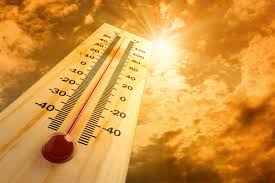Human actions caused 2016’s record heat
 By Alex Kirby
By Alex Kirby
LONDON, 20 January, 2017 – Scientists have confirmed that 2016 was the hottest year recorded, breaking the previous record set in 2015. They are certain that human activity is a main cause of the increasing heat.
Last year’s globally averaged temperature was about 1.1°C higher than before the Industrial Revolution and about 0.83°C above the long-term average (14°C) recorded between 1961 and 1990.
The fact that the temperature increase now exceeds 1°C is especially significant in the light of the international agreement reached in Paris in December 2015 to keep the rise “well below” the 2°C previously agreed, and to pursue efforts to limit it to 1.5°C. Also striking is the gathering speed of its onset.
Announcing the confirmation, the World Meteorological Organisation (WMO) said that although a very powerful El Niño had helped to drive temperatures upwards early last year, they had remained well above average after it had ended.
WMO relies on data from two US agencies, the US National Oceanic and Atmospheric Administration (NOAA), and NASA’s Goddard Institute for Space Studies, and two UK partners, the Met Office Hadley Centre and the University of East Anglia’s Climatic Research Unit.
Trump tweet
The incoming US president, Donald Trump, inaugurated today, has rejected climate science, saying in a 2012 tweet that the concept of global warming was a hoax created by the Chinese. Last November one of his senior campaign advisers said Trump was likely to eliminate all climate change research conducted by NASA as part of a crackdown on “politicised science”. But more recent reports suggest that the new president may be moderating his position.
The WMO itself is in no doubt of the import of its announcement. “2016 was an extreme year for the global climate and stands out as the hottest year on record,” its secretary-general, Petteri Taalas, says. “But temperatures tell only part of the story.
“Carbon dioxide and methane concentrations surged to new records. Both contribute to climate change. We have also broken sea ice minimum records in the Arctic and Antarctic.
“The effect of human activity on our climate
is no longer subtle. It’s plain as day, as are the impacts
that it is having on us and our planet”
“Greenland glacier melt – one of the contributors to sea level rise – started early and fast. Arctic sea ice was the lowest on record, both at the start of the melt season in March and at the height of the normal refreezing period in October and November.
“The Arctic is warming twice as fast as the global average. The persistent loss of sea ice is driving weather, climate and ocean circulation patterns in other parts of the world. We also have to pay attention to the potential release of methane from melting permafrost.”
Extreme 2016
Throughout 2016, there were many extreme effects on the weather. Record ocean heat, for instance, contributed to widespread coral reef bleaching.
Michael Mann, director of the Earth System Science Center at Penn State University, in the US, says: “For the first time in recorded history, we have now had three consecutive record-warm years for both the globe and the northern hemisphere.
“The likelihood of this having happened in the absence of human-caused global warming is minimal. As we have shown in previously published work, the spate of record-warm years that we have seen in the 21st century can only be explained by human-caused climate change.
“The effect of human activity on our climate is no longer subtle. It’s plain as day, as are the impacts – in the form of record floods, droughts, superstorms and wildfires – that it is having on us and our planet.”
Kevin Trenberth, of the National Center for Atmospheric Research at Boulder, Colorado, in the US, says world weather is a combination of natural variability plus global warming from human influences: “The weather experienced around the world in the past year … shows us the sort of thing that will become routine in a decade or so.
“This includes record numbers and record intensity of hurricanes and typhoons, record widespread heavy rains and flooding – think Houston, Louisiana, the Carolinas (Hurricane Matthew) and now California – record drought, heatwaves and wild fires, and increasing inundations in coastal regions from rising sea level.” – Climate News Network







